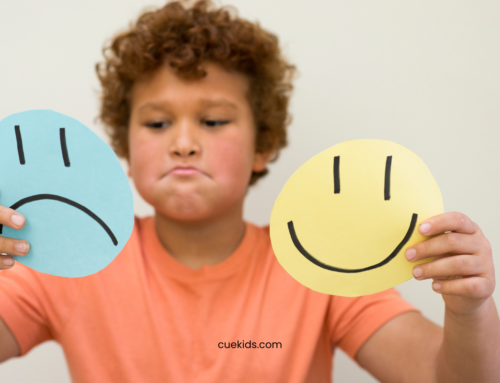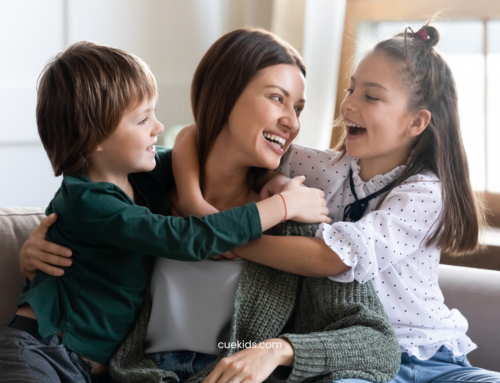“Tests have shown that, with pre-school children, the understanding of the expressions and gestures of others precedes the making of these signals by the child himself” – Desmond Morris, The Child.
It’s the way we are meant to be:
In his book, The Lost World, Crichton talks about how infants of many mammals can walk minutes after they are born, while human infants can’t walk for a full year. He says this is because, as humans, our brains have literally exploded in evolutionary terms. And to ensure that the big head which comes with the big brain does not result in the death of the child and mother during childbirth, infants are born very early, while the brain is still small and not fully developed.
In fact, the brain doubles during the first year of life. This being the case, there is a lot that the child is yet to catch up on when it is born. He is meant to grasp everything around him the minute he utters his first cry. Picking up the unsaid gestures all around him would naturally be his first lesson. Let’s learn more about can kids read body language. Body language refers to nonverbal cues such as facial expressions, gestures, posture, and tone of voice, which can convey a wealth of information about a person’s thoughts, feelings, and intentions.
Role of the mother:
It is perhaps a survival instinct in the newborn that urges him to quickly start making sense of the world around him since communicating what he wants would be vital. The very first person he interacts with is his mother. Her role is thus critical in the two-way nonverbal communication of the child. Not only does the baby learn to tell her in different ways what he wants, but he also learns to understand what the mother is saying. Of course, at this point, her words hardly matter. It is the expression on her face or her hand movements that gives him an idea of what she is asking.
It is not just the actions that the child starts picking up. The emotions come loaded along with the expressions. For example, a child can recognize and respond to facial expressions such as smiles or frowns. As they continue to interact with caregivers and peers, they learn to interpret more nuanced cues and understand the social implications of body language.
It is not just the actions that the child starts picking up. The emotions come loaded along with the expressions. If the child sees the mother getting more upset than happy, he will learn this emotion more quickly. If he sees the mother happy in the presence of the father or the grandparents or when he himself is smiling, he will learn to display happiness more readily.
Learning the meaning of gestures:
Slowly, as the infant starts growing up, others in the immediate family also play a role in the display of gestures around the child. Then come the teachers and finally friends. You might see the toddler put his hands on his hips when he talks in an angry tone if this is displayed by his mother or father. Or shout “yay” whenever a piece of good news is announced if his near ones do the same. He might nod slightly when he says thank you if this politeness exists in the family. As he grows up, you may even see the child saying words with the same accent as parents, the same pitch, and the same stress on syllables. Body language for kids plays an important factor in children’s development.
You might probably have seen a child fall down and still in shock, unsure how to react to the incident. If the accompanying adult pays great heed and starts checking him for bruises in panic, the child learns to react with fear and panic. On the other hand, if the adult just gathers the child, cleans the dust on his pants, and encourages him to continue with his play, the child will learn to ignore minor falls and bruises. This is one of the first ways in which he might be learning to react to incidents with emotions – checking the reactions that adults give to incidents.
Similarly, on the dinner table, if adults are encouraging the child to eat all the items on display, but there is one adult who shows disinterest in a particular dish or makes a face, the child is quick to learn that this is yet another reaction which can be given to the food presented to him.
The reactions that the child learns come both from the interaction of adults with each other and that with him. You can probably recall how your child would do some mischief and wait to watch the expression on your face. He would guess your reaction to his action and act accordingly.
For example, if he spills water on the floor deliberately, and you give him a stern serious look, he would not be encouraged to repeat the action. But if you end up laughing at his clumsiness or even showing fake anger, he would probably spill a little more water on the floor. We should remember that kids are smart to tell fake expressions from real ones a lot of times. So be sure you think twice before reacting to any action that your child performs.
Learning to form habits
Body language is picked up by children not only when they are learning to express emotions but also during the habit-forming stages. For example, if the child sees the father enjoys listening to music every morning, he might find enjoyment in this activity. If the child sees the mother forget the world around her when she is reading a book, the child would learn to concentrate as well. If the elder child grumbles when the mother asks him to brush his teeth at night, the younger one will do the same. If he sees the help at home take extra care to keep the house clean, the child will learn about cleanliness. These habits, hobbies, characteristics all can be formed unconsciously, and we need to realize just how much our expressions and gestures have to do with it.
In child play:
When children are playing with each other, there is a good display of imitation and body language. There will normally be one child who emerges the leader, not necessarily the eldest one. This child will take the lead and invent new games or steps and the rest of the children in the “team” will follow. This is strongly seen in toddlers who are yet to learn to communicate. If one child jumps up and giggles, the rest do the same. If she runs to the slide, all of them will want their turns at the slide. More than showing off, kids are learning non-verbally to enjoy a game by themselves boosting their confidence.
Talking is going to be as big a milestone for the child as walking. Just as much as we want to encourage him to use gestures to express himself, we also want to see him practice his syllables and vowels and learn the language. A balance of the two would be vital. Since kids are perceptive to our movements and expressions from day one, as parents, grandparents, and teachers we can employ this channel of communication almost immediately to ease our way into the world of interaction.
Workshop for Teachers and Parents:
We conduct customized workshops to teach teachers and parents a scientific approach of using effective body language to understand kids and convey consistent messages to them. You can contact us for our brochure and further details.






[…] them. Your body language also plays a big role in the communication process with your kid. Kids do read body language and respond […]
[…] affect their behaviors. They can learn to interact with others as a group to build their body language and […]
[…] interactive and immersive learning techniques. But our USP as a company is teaching them about body language as well whilst they learn these key skillsets that will contribute to their overall wellbeing and […]